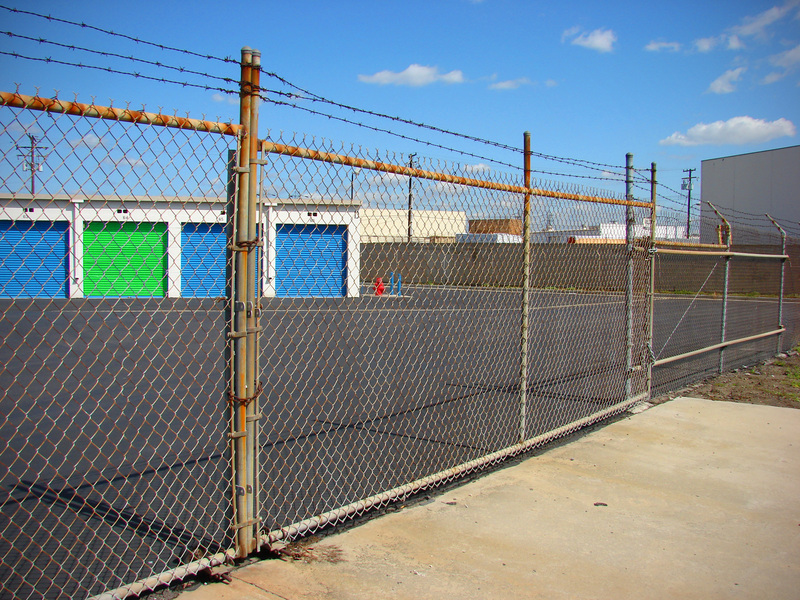Store Your Sofa Like a Pro: Insider Tips for Lasting Preservation
Properly storing your sofa might seem straightforward, but doing it incorrectly can lead to substantial damage, costly repairs, and unnecessary heartache. Whether you're moving, renovating, downsizing, or simply need to create extra space, knowing how to store your sofa like a pro ensures its longevity and keeps it looking as good as new for years to come. In this comprehensive guide, discover expert tips, smart solutions, and key insights to help you store your cherished sofa safely and efficiently.
Why Proper Sofa Storage Matters
Sofas are significant investments, both financially and emotionally. Unlike other pieces of furniture, sofas are often the centerpiece of your living space, where comfort, style, and memories combine. Storing your sofa the right way is crucial to protect its integrity, aesthetics, and value. Here's why it matters:
- Prevents mold, mildew, and pest infestations
- Reduces wear, fading, and fabric deterioration
- Preserves structural integrity
- Saves money on repairs or replacements
- Makes moving and redecorating simpler

Step 1: Prepare Your Sofa for Storage
Clean Thoroughly
Before you even think about moving your sofa into storage, clean it meticulously. Dust, crumbs, and stains can attract pests and cause mold growth over time. Follow these steps for a deep clean:
- Vacuum all surfaces, including under cushions and beneath the sofa.
- Spot clean stains using the manufacturer-recommended cleaner.
- Wipe down hard surfaces (like wood or metal legs and accents) with a damp cloth.
- Allow the sofa to air dry completely.
Disassemble If Possible
To make moving and storage easier, disassemble your sofa as much as the design allows. This helps prevent stress or damage to the frame and upholstery. Typical removable components include:
- Cushions and pillows
- Legs and armrests
- Modular sections in sectional sofas
Store or wrap these components separately for added protection.
Step 2: Choose the Best Storage Environment
Prioritize Climate-Controlled Storage
Moisture, heat, and humidity are the arch-enemies of upholstered furniture. Opt for a climate-controlled storage unit, if available, to maintain a consistent temperature and humidity level. This is particularly important if your sofa is made of:
- Leather: Prone to cracking and fading in extreme temperatures
- Delicate or vintage fabrics: Susceptible to mold and deterioration
If a climate-controlled unit isn't possible, never store your couch outdoors or in areas prone to extreme temperature swings, such as garages, sheds, or unfinished basements.
Select the Right Storage Size
Measure your sofa and choose a storage unit large enough to accommodate it without forcing the furniture into awkward angles. Cramped spaces can crush cushioning and warp frames, causing irreversible damage.
Step 3: Protect Your Sofa for Lasting Preservation
Wrap It Like a Pro
Effective wrapping acts as an armor against dust, dirt, and accidental scratches. Here's how to do it right:
- Plastic wrap: Use with care. Only wrap over a layer of fabric or moving blankets to prevent condensation buildup, which can cause mold.
- Moving blankets: Soft and breathable, they're perfect for keeping the sofa dust-free and cushioned against bumps.
- Shrink wrap: Suitable for securing blankets, but avoid direct contact with your sofa's upholstery.
Pro Tip: Don't use regular plastic sheets directly on the sofa for long-term storage. They trap moisture, leading to mold growth and fabric damage.
Use Sofa Covers or Bags
For extra protection, invest in specialty sofa covers or storage bags made from breathable materials. These are specifically designed to shield against dust, insects, and light environmental moisture, ensuring your sofa stays fresh.
Step 4: Position Your Sofa Properly in Storage
Keep It Off the Floor
Avoid direct contact with the ground by raising your sofa using wooden pallets or blocks. This minimizes exposure to any possible dampness and allows airflow beneath the furniture.
Don't Stack or Pile Items
Resist the temptation to use your sofa as a makeshift shelf. Stacking boxes or other items on top of your sofa can flatten cushions and strain the frame. Always store it upright and alone, giving it the space it deserves.
Allow for Air Circulation
Avoid pushing your sofa flush against walls or other pieces of furniture. Leave a few inches of breathing room on all sides. This prevents mold growth and allows moisture to dissipate naturally.
Step 5: Ongoing Care and Checks
Visit Periodically
If your sofa will be in storage for more than a couple of months, visit your storage unit regularly to check for any signs of moisture, pests, or deterioration. Early detection can prevent minor problems from becoming major headaches.
Reapply Treatments as Needed
Leather sofas benefit from occasional conditioning, even in storage. For fabric sofas, consider applying a fabric protector spray before storage and reapplying as recommended to maintain resistance to stains and spills.
Readjust and Air Out
Every now and then, readjust the coverings and let your sofa breathe. Carefully remove the blankets or covers for a few hours on a dry day to release any trapped moisture.
Additional Pro Tips to Prolong Your Sofa's Life During Storage
- Label all removed parts and cushion covers so reassembly is hassle-free.
- Store hardware, screws, and legs in clearly marked bags taped under the sofa base or in a dedicated box.
- Photograph the disassembly process for a visual guide during reassembly.
- Consider using silica gel packets or moisture-absorbing products inside the storage unit to control humidity.
- Avoid harsh cleaners or chemicals that may damage upholstery over time.
Common Storage Mistakes to Avoid
Even with the best intentions, common mistakes can cause lasting harm to your sofa. Watch out for these pitfalls:
- Skipping the cleaning step: Dirt and food remnants can attract pests and foster bacteria.
- Wrapping in non-breathable plastic: Traps moisture, leading to odors and potentially irreversible mold damage.
- Storing in damp environments: Basements and garages can spell disaster without climate control.
- Using sofas as shelves: Excess weight can warp frames and flatten cushions.
- Neglecting periodic visits: Issues can escalate if not caught early.
What About Storing a Sofa at Home?
If you don't have access to off-site storage, storing your couch at home is a viable option. Follow these best practices:
- Choose a dry, clean room with stable temperature and humidity levels.
- Use breathable covers and raise the sofa off the floor, just as you would in a storage facility.
- Keep pets and small children away to prevent accidental damage.
Eco-Friendly and Long-Term Sofa Storage Solutions
Sustainable Storage Materials
If eco-consciousness is a priority, opt for reusable moving blankets, organic cotton covers, or biodegradable packing materials. These not only help preserve your sofa but also reduce environmental impact.
Long-Term Preservation Tips
- Rotate stored sofas (if practical) every few months to prevent pressure points.
- Ensure ample airflow to avoid musty odors and mold development.
- Periodically renew fabric or leather conditioning treatments for optimal preservation.

Frequently Asked Questions about How to Store a Couch
Can I store my sofa upright to save space?
Storing a sofa upright can save floor space, but it's best limited to short periods or when absolutely necessary. Over time, standing a sofa on its side or end may cause stress to the frame and upholstery. Ideally, sofas should be stored flat and on their feet to distribute weight evenly.
How long can you store a sofa safely?
With proper preparation and storage conditions, a sofa can be stored safely for months or even years. Regular check-ins and ongoing care make a significant difference in lasting preservation.
Is it okay to stack boxes on top of my sofa?
No. Nesting items on your sofa causes indentations, warps the frame, and degrades cushions over time. Always give your sofa its own space.
Conclusion: Store Your Sofa for Lasting Value
Preserving your sofa's look, feel, and value doesn't have to be complicated. By cleaning thoroughly, choosing the right storage environment, using proper protection, and performing ongoing checks, you'll ensure your beloved couch survives storage unscathed. Remember, how you store your sofa today can make all the difference for tomorrow's comfort and style.
Now that you know how to store your sofa like a professional, you can approach your next move or renovation with confidence. For more tips on furniture care and smart storage, stay tuned to our resourceful guides!